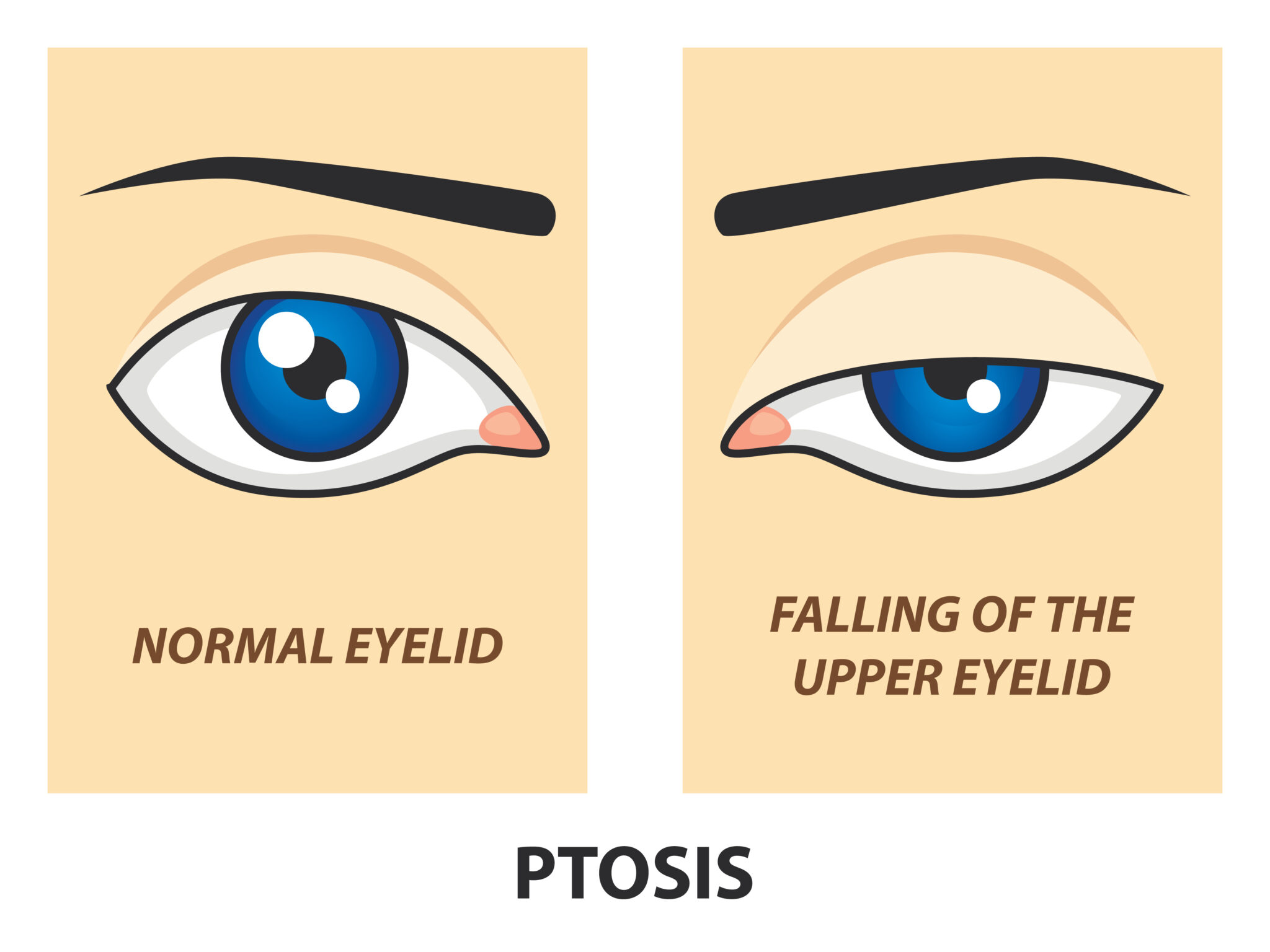What are the symptoms of ptosis?
Ptosis, or drooping of the upper eyelid, can present with various symptoms. Key signs include:
- Drooping Eyelid: The most noticeable symptom is one or both upper eyelids drooping or sagging. This can be subtle or severe, sometimes covering part of the pupil.
- Difficulty Seeing: As the eyelid droops, it may partially block the field of vision, making it challenging to see properly.
- Eyestrain: People with ptosis may experience eyestrain or fatigue because they may try to raise their eyebrows or tilt their head back to compensate for the drooping lid.
- Head Tilting: To improve vision, individuals with ptosis might tilt their head backward or elevate their eyebrows.
- Asymmetry: If ptosis affects only one eye, there will be noticeable asymmetry in the appearance of the eyelids.
- Vision Changes: In severe cases, ptosis may affect vision clarity if the drooping eyelid obstructs the line of sight.
What are the causes of ptosis?
Ptosis, or drooping of the upper eyelid, can arise from various causes:
- Muscle Weakness: Damage or weakness of the levator muscle, which lifts the eyelid, can cause ptosis. This can result from conditions like myasthenia gravis or congenital muscle issues.
- Nerve Damage: Injury or dysfunction of the nerves controlling the eyelid muscles, such as the oculomotor nerve (cranial nerve III), can lead to ptosis. This can be caused by conditions like a stroke, brain tumor, or diabetic neuropathy.
- Age-Related Changes: As people age, the connective tissue and muscles in the eyelid can weaken and stretch, leading to ptosis, often referred to as senile ptosis.
- Congenital Ptosis: Some individuals are born with ptosis due to a developmental issue with the levator muscle or its nerve supply.
- Trauma: Injury to the eyelid or surrounding areas can damage the muscles or nerves responsible for eyelid elevation, resulting in ptosis.
- Systemic Conditions: Diseases such as Horner’s syndrome, which affects the sympathetic nervous system, can cause ptosis.
- Tumors: Tumors or growths in or near the eye can put pressure on the muscles or nerves, leading to ptosis.
- Infections and Inflammation: Conditions like orbital cellulitis or inflammation from allergies can cause swelling and ptosis.
- Surgical Complications: Previous eye or eyelid surgery might result in ptosis due to damage or alteration of the eyelid muscles.
What is the treatment for ptosis?
The treatment for ptosis depends on its underlying cause and severity. Options may include:
- Surgical Correction: For significant ptosis or when other treatments are ineffective, surgical intervention is often recommended. This surgery aims to tighten the levator muscle or reposition the eyelid to improve its function and appearance.
- Medications: If ptosis is caused by an underlying condition such as myasthenia gravis, medications to manage that condition may help improve the ptosis. For instance, anticholinesterase agents may be used to treat myasthenia gravis.
- Eye Drops: In some cases, especially when ptosis is mild, special eye drops like apraclonidine can temporarily lift the eyelid. This is generally a short-term solution.
- Treating the Underlying Condition: If ptosis results from an underlying health issue, such as nerve damage or a systemic condition, managing or treating that condition can help alleviate the ptosis.
- Physical Therapy: For some cases of ptosis caused by muscle weakness, physical therapy exercises may help strengthen the muscles involved in lifting the eyelid.
- Supportive Measures: In cases where surgery is not an option, supportive measures like eyelid crutches or prosthetic devices may be used to help keep the eyelid open.
The appropriate treatment plan is determined based on the specific cause of the ptosis and the overall health of the patient.

Leave a Reply
You must be logged in to post a comment.